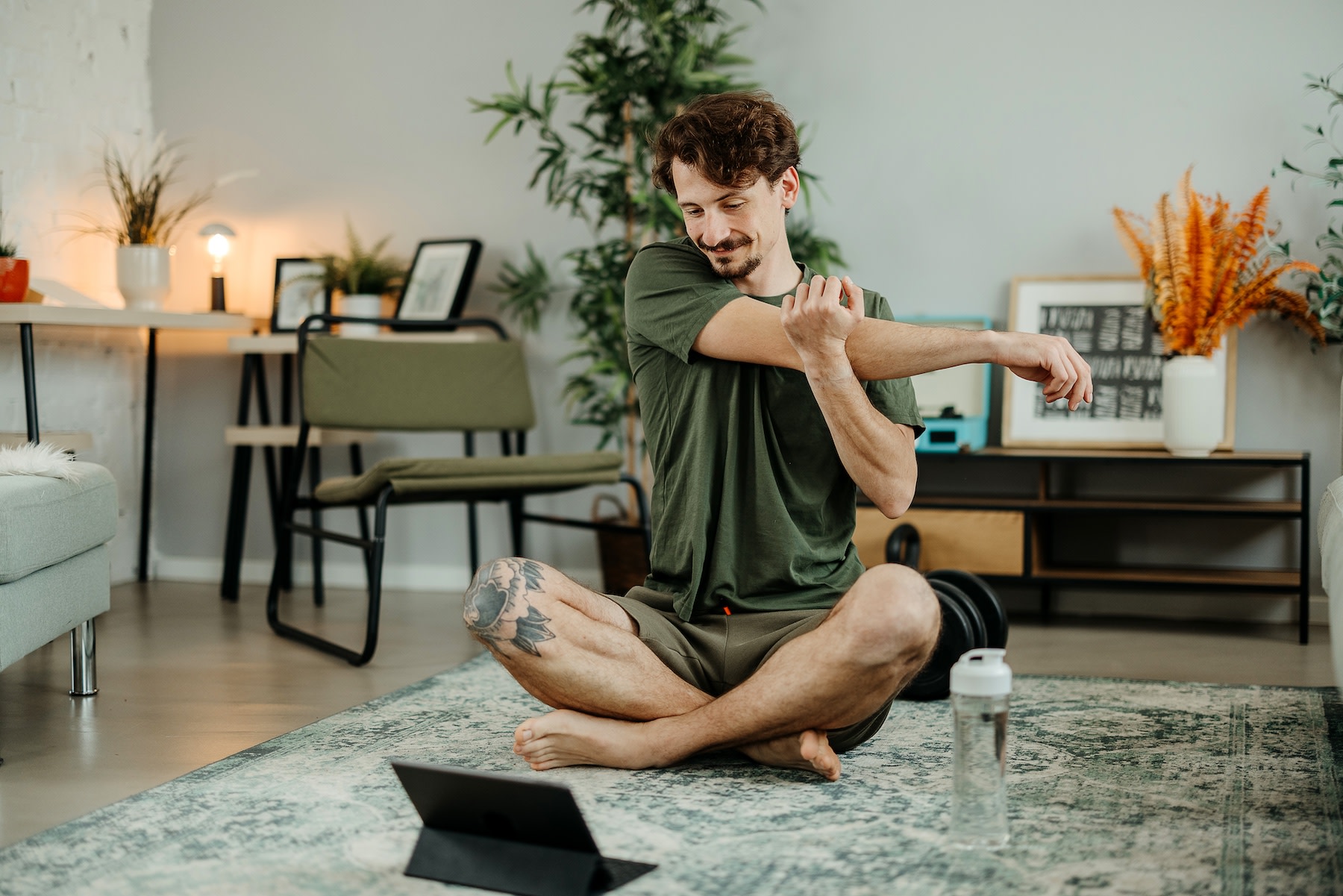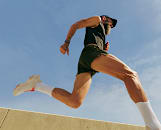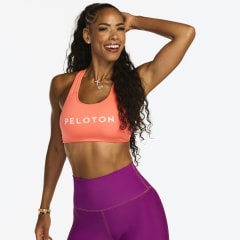
StefaNikolic / E+ via Getty Images
A Step-by-Step Guide to What to Do After a Workout
Consider this post-exercise routine a non-negotiable extension of your workout.
By Kylie Gilbert•
So you just wrapped up a workout and feel tired, sweaty, and ready to move on with your day. Not so fast: From stretching to hydrating, the steps you take after your sweat session has officially ended are arguably just as important as the main event.
Discover more ways to reach your goals with Peloton
But knowing exactly what to do after a workout—and in what order—can feel confusing sometimes, especially if you’re a fitness beginner or forming a new routine. While your post-exercise routine might vary based on your specific workout and goals (like gaining muscle or reducing soreness) and how much time you have, there are a few non-negotiable post-exercise steps to take to keep you healthy and on track.
Below, find a few step-by-step tips for what to do after a workout, according to a Peloton instructor, a physical therapist, and an exercise physiologist.
1. Cool Down
If you’re short on time, you might be tempted to leave class before the post-workout cooldown portion, but this can backfire—especially after a vigorous workout. That’s because high-intensity workouts can cause lactic acid and other metabolic waste products to build up in your muscles, potentially contributing to muscle soreness, says physical therapist Ben Buchanan. Fortunately, taking time to cool down can help minimize this effect by increasing blood flow to the affected muscles, according to the American Council on Exercise (ACE). In other words, skipping the cooldown can slow your recovery.
Fortunately, cooling down doesn’t have to be complicated. After a run or ride, it could be as simple as walking on the treadmill or slowly pedaling on your bike for five minutes to gradually lower your heart rate, Buchanan says. After a strength training workout, experts recommend focusing on dynamic stretches or active recovery movements that work the muscles you just activated—like cooling down with large arm strings after push-ups, for instance.
“After a long run or some speed work, I like to do an easy walk for five minutes—it’s a perfect way to allow my heart rate to come down and for my nervous system to regulate,” says Peloton instructor Kirsten Ferguson.
2. Stretch and Foam Roll
After bringing down your heart rate with a cooldown, make time for stretching, which further helps flush metabolic waste out of muscles and limits soreness, Buchanan says.
The stretches you should do will largely depend on the workout you just completed. For example, after a cycling workout, that might include a hamstring stretch, runner’s lunge, standing quad stretch, chest stretch, or cat-cow, Buchanan adds. (Want to remove the guesswork? The Peloton App has tons of guided stretching classes that make the practice simple.)
Beyond the benefits of stretching for your body, research suggests that there could also be a powerful mental component to the practice, since it activates the parasympathetic nervous system and, as a result, promotes relaxation and reduces stress levels. Foam rolling has also been shown to help reduce DOMS (delayed onset muscle soreness) after high-intensity interval training.
Kirsten says she foam rolls and stretches for 10 minutes after her workouts, noting that these are important steps for everyone to take after exercise that enable you to keep showing up in your workouts.
3. Hydrate
After finishing a workout, you’ll probably feel thirsty—and it’s important that you sip up accordingly. When you perform any activity that makes you sweat, especially in the heat, you’ll need to drink extra water to replace that fluid loss, says Micah Zuhl, PhD, a professor of exercise science at Central Michigan University. This is more important than you might realize: “A mere 3–5 percent loss of body water can reduce physical and cognitive performance,” Zuhl says.
So yes, hydration is right up there with cooling down and stretching as a post-workout non-negotiable. (And of course, you should also hydrate before and during your workout, and generally throughout the day.)
After a vigorous workout, electrolytes can also help replenish key minerals lost through sweat, such as sodium and potassium—which is why Kirsten follows her post-workout stretch with an electrolyte mix. While you typically get enough electrolytes from eating a balanced diet, replenishing with a sports drink or electrolyte supplement may be necessary after exercising for about 90 minutes or more or after working out in hot, humid conditions.
4. Meditate
Consider this step extra credit, but meditation might come easier after a workout when you’re feeling energized and loosened up. A few perks: Meditating after a workout (even a low-impact one) provides a mental reset that may help you better tackle the rest of your day. And, even if you didn’t feel like you crushed it during your sweat session, meditation provides the perfect opportunity to incorporate positive affirmations (“I am strong and capable”) and gratitude (“I am grateful for my strong legs”) into your day, which can improve your overall well-being.
If you want to knock out two to-dos at once, you can even try a cooldown gratitude walk.
5. Wipe Down Your Equipment
If you’re working out at a studio, your trainer might pass around a wipe to clean your equipment after class. But this step should also be followed after every at-home or gym workout, even when no one’s watching.
Cleaning your yoga mat, for example, prevents bacteria, viruses, mold, and fungi from accumulating, which can increase your risk for skin infections, warts, and fungal infections. Plus, wiping off sweat, dirt, and odor from your space also makes that next workout way more appealing.
6. Take a Hot Shower
Sometimes, we have to stay in our sweaty workout clothes a little longer than we’d care to admit—no one’s perfect and life gets busy, after all! But damp clothes rubbing against your skin can be a major culprit for body acne, which is why dermatologists always recommend changing into fresh, dry, clean clothes ASAP once your workout (and post-workout cooldown or stretch) has ended. Ideally, this would follow a hot shower to remove sweat and acne-causing bacteria from your skin, but in a pinch, try to at least use an antimicrobial cleansing wipe to remove sweat and bacteria.
A couple other perks of that post-workout shower beyond safe–guarding your skin? Taking a hot shower can also have a calming effect after a high-impact workout. And if you’re a fan of evening workouts, taking a 10-minute hot shower a couple of hours before bed might even help you drift off faster, according to one 2019 study.
7. Refuel with a Healthy Snack or Meal
“I typically do my runs or long runs in the morning, so by the time I’m done with my workout, my body is ready for some fuel,” Kirsten says, adding that her go-to post-workout breakfast of choice is avocado toast with eggs on top.
While refueling immediately after exercising isn’t crucial after a short or low-impact workout, eating a well-balanced post-workout snack or meal is definitely important to maximize recovery after strenuous or high-intensity exercise (like a long run). Refueling with protein within about two hours after exercise may also help you build muscle.
Related Articles

Meditation
Should You Meditate Before or After a Workout? This Is What Experts Recommend

Health
Should You Take a Hot or Cold Shower After a Workout?

Nutrition
What to Eat After a Workout to Maximize Your Results

Stretching + Mobility
The Best Post-Workout Cooldown Exercises to Leave You Recovered and Refreshed
What Not to Do After a Workout
As for what you don’t want to do right after a workout to maximize recovery and prevent injury?
“Don’t sit down right away after a workout—this can cause blood to pool and lead to an accumulation of metabolic waste products,” Buchanan says. (Remember: That can contribute to muscle soreness later.)
You also might want to proceed with caution when it comes to a few popular post-workout recovery tools. While a post-workout cold plunge may be useful for some athletes looking to reduce perceived muscle soreness, for others, it could actually limit strength gains over time. “If the goal is to grow muscle, then submersion in cold water can prevent the inflammatory response that is needed to help the muscle repair,” Zuhl says.
And while hopping in your gym’s sauna might seem like a relaxing step after your workout—and there are some notable benefits the practice may provide—it’s important to consider your workout intensity and hydration levels before doing so. Sitting in the sauna right after a high-intensity workout can amplify dehydration, which could cause dizziness and muscle cramps—another reminder to replace lost fluids with water and electrolytes. (You could also want to consider infrared saunas, which aren’t nearly as hot as traditional saunas, so long as you’re feeling up for it.)

Peloton App
Access thousands of classes with no equipment needed.
This content is for informational and educational purposes only and does not constitute individualized advice. It is not intended to replace professional medical evaluation, diagnosis, or treatment. Seek the advice of your physician for questions you may have regarding your health or a medical condition. If you are having a medical emergency, call your physician or 911 immediately.
This content is for informational and educational purposes only and does not constitute individualized advice. It is not intended to replace professional medical evaluation, diagnosis, or treatment. Seek the advice of your physician for questions you may have regarding your health or a medical condition. If you are having a medical emergency, call your physician or 911 immediately.
Get our latest health stories straight to your inbox
Enter your email to get articles, expert-backed tips, and updates from Peloton sent to your inbox.
By providing your email address, you agree to receive marketing communications from Peloton.
For more about how we use your information, see our Privacy Policy.









